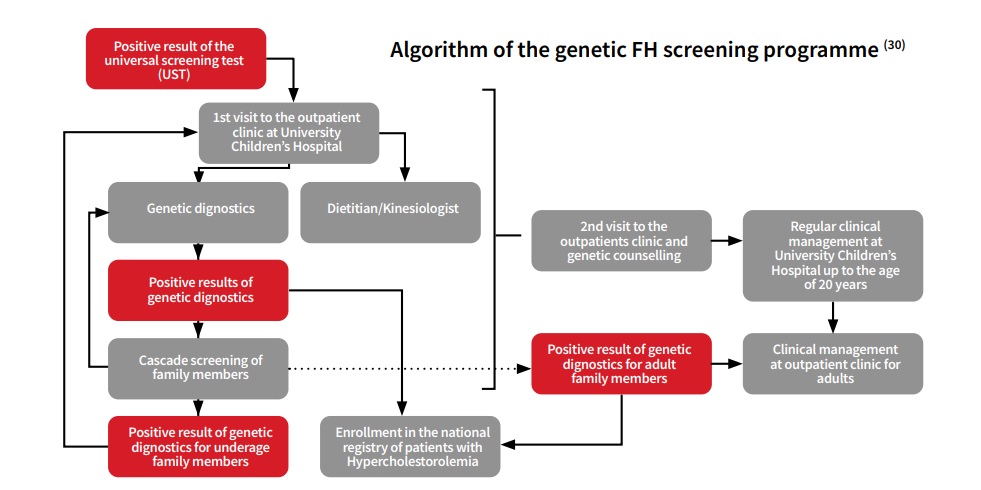The ScreenPro FH Project has gained another country leader from Slovenia. Urh Groselj, MD, PhD, MA from UMC – University Children’s Hospital Ljubljana together with his team are dedicated to improving the prevention and control of raised cholesterol in children through their work on FH pediatric screening. Their efforts have been recognized in a World Heart Federation white paper titled “Improving Prevention and Control of Raised Cholesterol.” The paper highlights the challenge of FH remaining largely undiagnosed due to a lack of public and health professional awareness, leading to a significant increase in the risk of atherosclerosis and cardiovascular disease in early adulthood for those with undiagnosed or untreated FH. Please find an extrat of the article below:
CHALLENGE
Familial Hypercholersterolemia (FH) remains largely undiagnosed due to a general lack of public and health professional awareness (28). Globally, it is estimated that only 10% of individuals affected benefit from a timely diagnosis. As a result, individuals with undiagnosed and/or untreated FH have up to 100-fold increased risk for developing atherosclerosis and CVD in early adulthood (29).
RESPONSE
Various screening strategies to identify children with FH exist – most rely on selective or cascade (within family) screening. These approaches, however, fail to identify patients without a known family history of high cholesterol. This led Slovenia (population two million) to initiate universal screening for hypercholesterolemia in five-year-old children in 1995.
OUTCOMES
Screening was gradually implemented nationwide during the programmed visit of all children aged five years at the primary care paediatrician, and as shown by the Slovenian national FH registry, the programme now reaches approximately 91% of the population of around 20,000 children each year.
In recent years, for every 1000 children screened, 2.3 children were identified as having positive screening results for FH and 3.4 children as having possible FH. The prevalence was 1/273 for possible FH, and 1/409 for confirmed FH. The prevalence of homozygous FH was estimated at 1/297,000. Thus, based on recent data, most children with FH are now diagnosed in each generation.
For every child who tests positive, there is now a possibility to provide cascade FH genetic testing to the parent with higher levels of cholesterol (or to both if not clear). According to the Slovenian Heart Foundation, the programme has significantly increased the proportion of diagnosed FH patients from 1% to around 20% in the last 15 years. The direct costs per new genetically confirmed familial hypercholesterolemia case reach approximately $1,015.
Key success factors included the fact that Slovenia has a solid network of primary care paediatricians and a health insurance system that provides almost universal coverage. Infants and children are entitled to regular preventive examinations, which also include vaccinations and health education (31). Substantial efforts were made to increase the awareness of paediatricians to ensure that all children are actually tested. In addition, there is only one centralized referral center for children with hypercholesterolemia, thus enabling a more accurate diagnosis of FH and further improved implementation of universal FH screening programmes. Support from policymaking organisations has also contributed to the success of the programme. Finally, regular education about universal FH screening is part of the medical school curriculum and paediatrics residency and regularly presented to health care professionals at workshops, symposia, and on other occasions.

The whole paper is available at the following LINK.